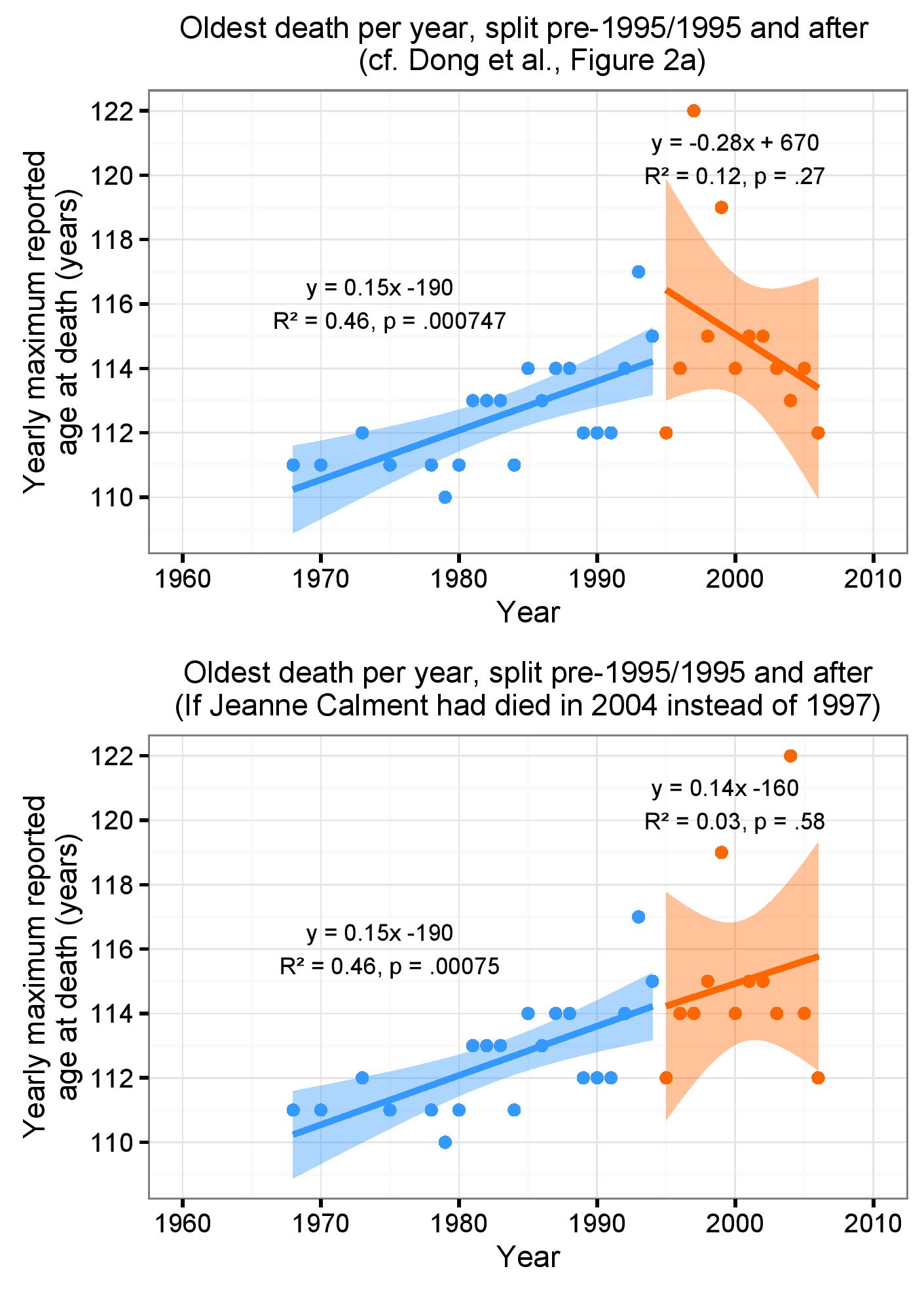Criticism of research on upper limit to human lifespan: one 122 year old woman has influenced the data
Nick Brown, a PhD student at the UMCG, and UG researcher Casper Albers, together with Stuart Ritchie of the University of Edinburgh, have described four serious flaws in research published in October 2016 by the prestigious scientific journal Nature. They evaluated the peer review process for the research and their criticism has been published 26 June, also in Nature.
For the article ‘Evidence for a limit to human lifespan’, the authors (Dong et al., 2016) had studied longitudinal mortality data and came to the conclusion that human lifespan has an upper limit of about 115 years. After a gradual increase in the maximum age over a number of decades, the researchers observed a slight decline in the last twenty years. This study received plenty of media attention, including criticism of the methodological underpinning (for example in the NRC newspaper, Van Santen, 2016).
The critical reflection
The critical reflection by Brown, Albers and Ritchie sets out four serious flaws:
First, Dong et al. used the same data set to generate their hypothesis and, subsequently, to test it. It is common statistical knowledge that this procedure is questionable: it leads to severe overfitting and too many false positive findings.
Second, the main claim in the Nature study is based on regression analyses with only n = 33 observations. It is clear that samples of this size are too small to make strong claims. Not only is the sample size small, the data also violate one of the properties required by the standard regression model: that of independent observations (or, actually, independent residuals). The data are the ages of the ‘oldest person’ alive, and as someone can only become the oldest person through the death of his/her predecessor, these data points are connected. Statistical models to deal with this type of data do exist, but were not used.
Third, the authors analyse a more extensive data set with an unnecessarily complicated regression model based on ‘smoothing splines’. The reanalyses by Brown et al. show that a basic linear model would fit just as well, or even slightly better.
The fourth flaw is the most important one. As can be seen in the top panel of the figure, the analyses by Dong et al. indicate a clear split in 1995. However, this clear split is fully driven by one single observation. Jeanne-Louise Calment was a French woman born in 1875 who died in 1997, at the remarkable age of 122. As far as is known, no other person has ever lived as long. Had she lived and died seven years later, thus from 1882 to 2004, the pattern found by Dong et al. (see figure, top panel) completely vanishes (bottom panel). Thus, the fact that this remarkable woman lived to the age of 122 has become, for Dong et al., a crucial component of their evidence that humans cannot live beyond 115.

Link to the article: No evidence for limited human lifespan
References:
Brown, N.J.L., Albers, C.J., Ritchie, S.J. (2017) No evidence for limited human lifespan . Nature.
Dong, X., Milholland, B. & Vijg, J. (2016). Evidence for a limit to human lifespan. Nature .
Van Santen, H. (2016). Nature article is wrong about 115 year limit on human lifespan. NRC Handelsblad .
| Last modified: | 20 June 2024 07.56 a.m. |
More news
-
07 October 2025
What art does to us
Psychologist Ralf Cox studies the effects of art on people — from heart rate to association, from emotion to social interaction. His research shows that the experience of art is both measurable and intangible.
-
01 October 2025
EU citizens on climate measures: support for subsidies, opposition to taxes
After a summer marked by multiple heatwaves exacerbated by climate change, a new study shows that many EU citizens are willing to support various forms of climate policy.
-
03 September 2025
Katherine Stroebe receives Royal Decoration
On 2 September 2025, Katherine Stroebe (Germany, 1975), former associate professor of Social Psychology at the Faculty of Behavioural and Social Sciences at the University of Groningen, received a Royal Decoration. She received the insignia of the...
